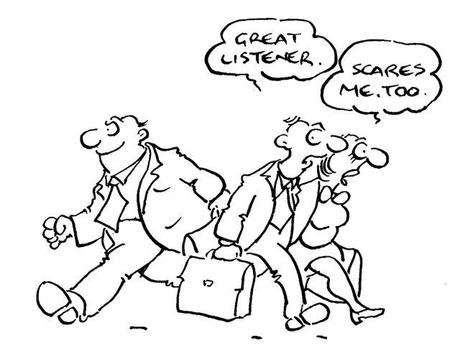Ever tried to manage a problem by not offering a solution?
 A lot of us automatically give advice. It’s not just a Mars and Venus thing. Men and women both do it. Sometimes it is the right thing to do; sometimes it’s not.
A lot of us automatically give advice. It’s not just a Mars and Venus thing. Men and women both do it. Sometimes it is the right thing to do; sometimes it’s not.
We are not all natural listeners. For most of my life, I did not think listening was an action. I thought only the people talking were actually doing something. My wife has often pointed out the error in this.
As it turns out, listeners are essential to a conversation. You can’t have a dialog without someone doing the listening part, at least some of the time. Communication is a 50:50 arrangement.
Listening also gives you time for deliberation. That has value, no matter how little you put into it. You are more likely to get a clear view of a problem when you have heard opinions other than your own.
It also helps avoid the deadly sin of enabling. If you sort out a problem for someone without much of their input, they’ll be less committed to the solution and they will have missed the chance to work it out themselves.
Although guilty of it, most parents know this. So should managers.
How can we hold back from advice giving?

If the answer is nothing, then keep at it. Next question: what have you thought you could do about it?
Don’t stop. If they have a thought, ask why it might or might not work.
If it’s a good one, ask them what is the next step they think they should take.
If it sounds right, let them get on with it. If they take ownership of the idea, they are far more likely to engage and perform. Building a team means empowering each member to exercise their strongest skills.
It may be that the person who brought the issue to you is not the person to manage it. Then ask another question: who is the best person to handle this?
It is not always you.

That means that up to 75% of the time, someone else has the skills to manage the problem. Get them working on it. Get that right and you will have time to get on with doing what you do best
If you want a team of independent self-starters – and what manager doesn’t – try a strategy based on questions. It will often do more for the productivity of both yourself and your people than one based on answers.

